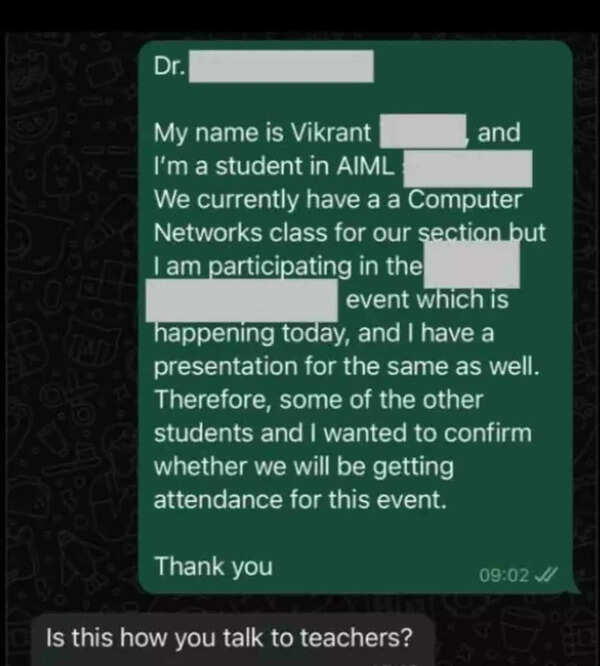The online debate, which quickly gathered attention with over 7,27,200 views and 10,000 likes, highlighted differing perspectives on how students should communicate with their teachers.While some commenters defended Vikrant’s informal tone as acceptable, others argued that a more respectful approach was warranted. This incident underscores the importance of understanding the etiquette expected in student-teacher interactions, especially in digital communications.

Here are seven key points students should remember when interacting with their teachers to ensure respectful and effective communication:
1. Use Formal Language: Even in casual digital communications, maintaining a formal tone is crucial. Begin messages with polite greetings such as “Dear Professor” or “Respected Sir/Madam.” This shows respect and acknowledges the teacher’s position.
2. Be Clear and Concise: Ensure that your messages are direct and to the point. Avoid long, rambling texts. Clearly state your query or concern to facilitate a quick and efficient response from your teacher.
3. Respect Cultural Norms: Different cultures have varying expectations for communication. In some contexts, such as India, using more formal language and titles is preferred. Be mindful of these norms to avoid misunderstandings.
4. Apologise for Mistakes: If a communication error occurs or if a message is perceived as disrespectful, apologise promptly. A simple apology can help resolve misunderstandings and maintain a positive relationship with your teacher.
5. Avoid Informal Slang: Refrain from using slang or overly casual language in academic conversations. Words like “lmaooo” might be appropriate among friends but can come across as unprofessional in a student-teacher interaction.
6. Acknowledge Teacher’s Time: Recognise that teachers have busy schedules. Be patient and allow reasonable time for a response. Avoid sending multiple follow-up messages in quick succession.
7. Follow Up in Person if Needed: For important or sensitive issues, consider following up in person. This approach can help clarify any confusion and demonstrate your commitment to resolving the matter respectfully.
By adhering to these guidelines, students can foster a more respectful and productive dialogue with their teachers. While digital communication offers convenience, maintaining professionalism is key to ensuring that interactions remain positive and effective.
